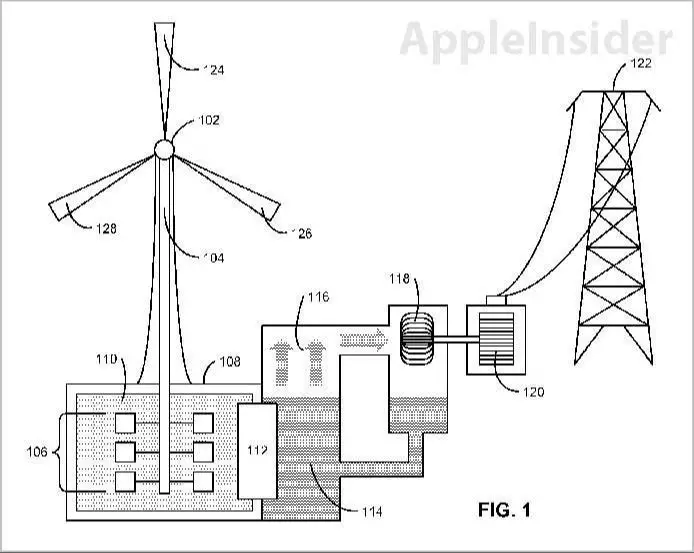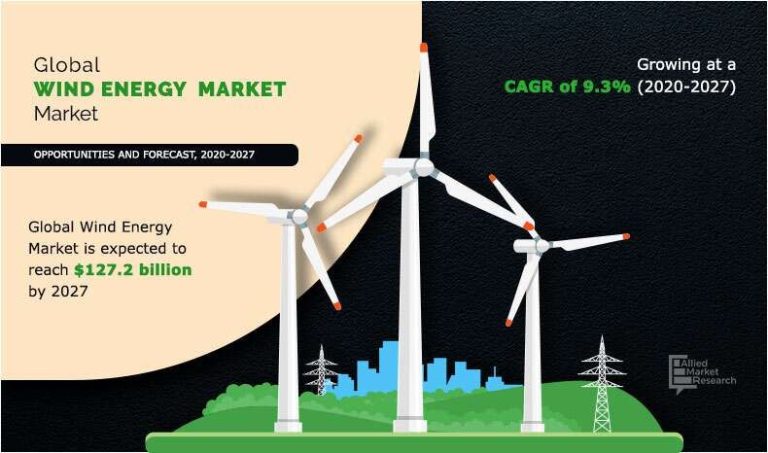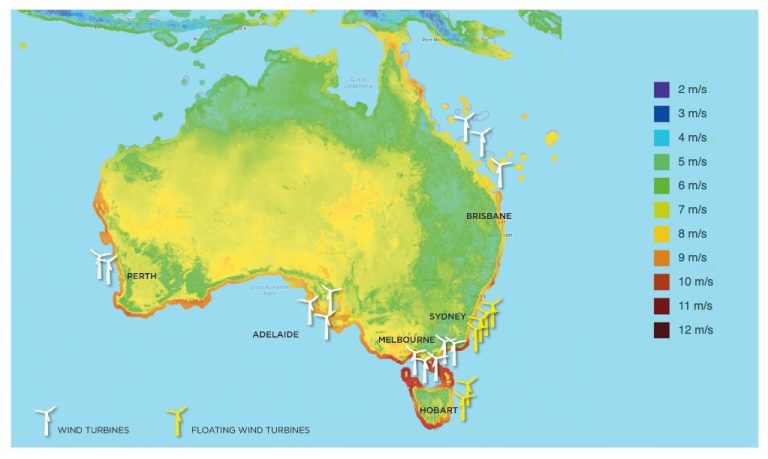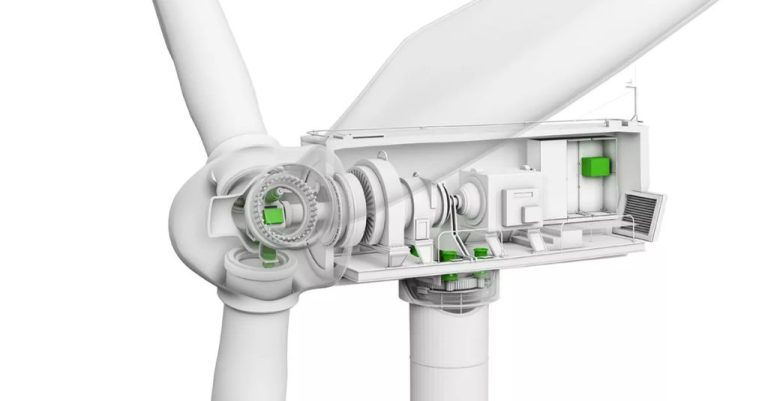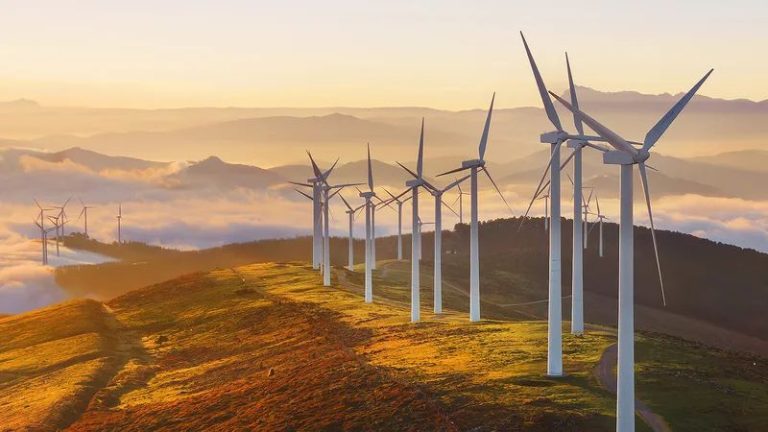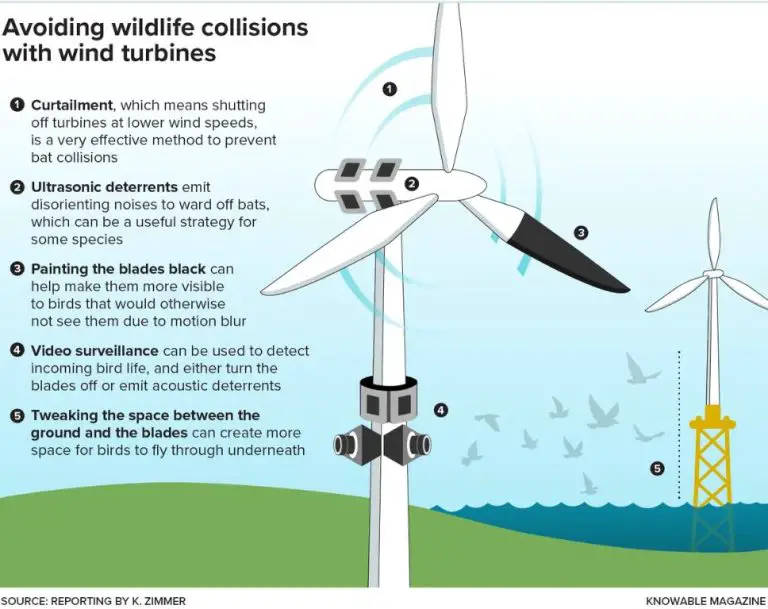How Many Watts Can A Small Wind Turbine Produce?
A small wind turbine is typically defined as a turbine that has a power rating of up to 100 kilowatts (kW). They are usually installed near the point of electric usage, like homes, farms, or businesses, to supplement electricity purchased from the utility grid. Knowing the power generation capabilities of small wind turbines in watts is important for understanding if they can realistically meet a location’s energy needs.
Small wind turbines are designed to produce enough energy to power a home, business, or community facility. Their generation capacities can range from just a few hundred watts to up to 100 kW. Determining their expected wattage output is essential for deciding if a small turbine installation will be worth the investment based on factors like wind resource, energy usage, turbine height, and location.
This covers the key points of defining small wind turbines, overviewing their power generation range, and explaining the importance of knowing their wattage capabilities. Let me know if you would like me to modify or expand this introduction section.
Typical Size and Power Ratings
Small wind turbines are typically defined as having rotor diameters up to 40 meters and power ratings from a few hundred watts to 50 kW, according to the Department of Energy’s WINDExchange (https://windexchange.energy.gov/small-wind-guidebook). Common rotor diameters for small turbines range from 1 to 12 meters, with swept areas of 0.8 to 113 square meters. The majority of small turbines sold in the 1 to 100 kW range have rotor diameters between 3 and 8 meters.
The National Renewable Energy Laboratory’s guide on small wind electric systems states that the power rating of a wind turbine is proportional to the rotor’s swept area and the cube of the windspeed. Therefore, doubling the rotor’s diameter increases power 8-fold (2^3=8) (https://www.nrel.gov/docs/fy09osti/35818.pdf). This cubic relationship explains why larger rotor diameters can generate substantially more power, even in low windspeed conditions.
Typical power ratings for small wind turbines cover a wide range. Residential-scale turbines usually generate from 400 watts to 10 kW. Mid-size turbines in the 10 to 50 kW range can power larger homes, farms, and small businesses. The largest small turbines max out around 100 kW, enough to power industrial applications.
Factors That Affect Power Output
There are several key factors that determine how much power a wind turbine can produce:
Wind Speed – The most important factor is wind speed. The power available in wind is proportional to the cube of the wind speed. This means that even small increases in wind speed result in large increases in power. Most small wind turbines are designed to operate optimally at wind speeds between 11-22 mph.
Rotor Swept Area – The larger the rotor blades and swept area, the more power a turbine can harness from the wind. Doubling the rotor diameter increases power output by a factor of 4. Typical small wind turbine rotors range from 6-12 feet in diameter.
Generator and Gearbox Efficiency – The generator and gearbox also influence power output. More efficient components will convert a greater percentage of the mechanical power from the rotor into electrical power. Generators are typically 40-60% efficient for small wind turbines.
References:
[1] https://css.umich.edu/factsheets/wind-energy-factsheet
[2] https://energyeducation.ca/encyclopedia/Wind_power
Average Power Production Estimates
The average power production or annual energy output of a small wind turbine depends on several factors, most importantly the turbine’s power curve and capacity factor. The capacity factor is an estimate of the turbine’s actual power production over a year divided by its maximum rated power if it were running at full capacity all the time. According to the American Wind Energy Association (AWEA), capacity factors for small turbines are estimated to range from 10-30%, whereas utility-scale turbines average around 35% (1).
For a 5 kW small wind turbine with a 25% capacity factor, the estimated average power production would be 5 kW * 24 hrs/day * 365 days/yr * 0.25 capacity factor = 2,190 kWh/yr. In general, a 5 kW turbine is estimated to produce around 2,000-4,000 kWh per year. Similarly, a 10 kW turbine with a 25% capacity factor would produce around 4,380 kWh/yr (2).
Larger home-sized turbines in the 20-100 kW range might have capacity factors of 30-35%. At a 30% capacity factor, a 20 kW turbine would average around 20 kW * 24 hrs/day * 365 days/yr * 0.30 capacity factor = 15,768 kWh/yr. The larger the turbine, generally the higher the capacity factor, but appropriate siting is critical to achieving the highest possible energy production (3).
Sources:
(1) https://windexchange.energy.gov/small-wind-guidebook
(2) https://www.nrel.gov/docs/fy09osti/35818.pdf
(3) https://www.energysage.com/about-clean-energy/wind/small-wind-turbines-overview/
Max Power Output Capabilities
The maximum power output capabilities of small wind turbines are determined by their rated power capacity. Most small turbines used for residential or small business applications range from 400 watts to 100 kilowatts in rated capacity [1]. However, a wind turbine’s power output depends greatly on wind speeds and turbine design.
To reach its maximum power output, a wind turbine needs consistently high wind speeds. Most small wind turbines reach their maximum power output at wind speeds of around 25-35 mph. At lower wind speeds, the power output is significantly reduced. The turbine starts generating power at around 7-9 mph but may only reach 10-30% of its rated capacity at 12-15 mph [2].
So while a 10 kW turbine may be chosen for a site, its actual power production will likely be lower on average due to varying wind speeds. Maximum power production requires high average wind speeds of 15+ mph [3]. Most small wind sites have average speeds of 10-14 mph, allowing the turbine to generate 30-40% of its rated max power on average.
Power Output in Low Wind Conditions
Small wind turbines are designed to start generating power at low wind speeds. This is referred to as the cut-in wind speed, which is typically around 3-4 m/s for small wind turbines according to EMSD HK RE NET.
The power curve shows the relationship between wind speed and power output. At low wind speeds near the cut-in speed, the power output is low but increases exponentially as wind speed increases. Most small wind turbines reach their rated power output between 10-15 m/s according to a technical assessment by Sustainable Technologies.
So while small wind turbines can generate some power at low wind speeds, their output is relatively low compared to higher wind speeds. The turbine design and placement is important for optimizing power production in low wind conditions. But there are limitations due to the physics of wind power generation at such low speeds.
Comparing to Solar Panels
When comparing the power output of small wind turbines to solar panels, it’s important to look at watts per square meter. Solar panels tend to have a higher power density than small wind turbines. According to Reddit user u/lennyflank [source], solar panels can produce around 200 watts per square meter, while small wind turbines produce around 10-20 watts per square meter.
This difference in power density means more solar panels can fit in a given area compared to small wind turbines. Solar also has a higher capacity factor than small wind turbines. Capacity factor refers to the average power generated compared to maximum rated power. Solar panels typically have a 15-25% capacity factor, while small wind turbines often have 10-15% capacity factors according to The Eco Experts [source]. This combination of higher power density and capacity factor means solar panels will usually produce more total energy over time compared to the same investment in small wind turbines.
Economics of Small Wind Turbines
The installed cost per watt for small wind turbines can vary greatly depending on the size, quality, tower requirements and installation complexity. According to Energysage, the cost per watt for small turbines under 2.5 kW in size typically ranges from $3 to $6 per watt installed [1]. For larger residential turbines between 10-100 kW, the installed cost per watt drops to $2 to $4 per watt [1].
The payback period for a home wind turbine is heavily dependent on the local wind resource, utility electricity rates, incentives and installation costs. According to the Department of Energy, small wind turbines can have payback periods ranging from 10-20 years [2]. With ideal wind conditions and high electricity rates, payback periods under 10 years are possible.
To achieve the fastest payback period, homeowners should carefully evaluate their local wind speeds, utility rates and incentives before investing in a wind turbine. Proper siting and an adequately sized turbine for the location are also critical factors in the project’s return on investment.
Siting Considerations for Optimal Output
The effectiveness of a small wind turbine is highly dependent on proper siting to take advantage of ideal wind speeds and conditions. According to the WINDExchange Small Wind Guidebook, small wind turbines require an average annual wind speed of at least 9 mph to be viable. The higher the average wind speed, the more power the turbine can generate. Wind speeds tend to increase with height, so taller tower heights are preferable. Most small turbines require tower heights of at least 30 feet, though 50-140 feet is ideal.
Turbines should be sited upwind of buildings and trees that could cause turbulence and blocked airflow. They perform best on open sites with steady wind flow, like hills, ridges, and open fields. According to the WINDExchange Small Community Wind Handbook, small turbines should be sited at least 300 feet from obstacles to minimize disruption to wind flow. Proper siting is critical to maximize power output and return on investment from a small wind turbine.
Conclusion
Small scale wind turbines are capable of producing usable power outputs to help offset grid electricity usage. Typical power output ranges of 3 – 10 kW are common for small wind turbines in the 5 – 20 foot rotor diameter range. For residential use, a grid-connected system in the 3 – 5 kW range can produce a meaningful percentage of a household’s electricity consumption. On average, small wind turbines will produce below their rated capacity, often between 10-30% of the max rated power. Actual power production depends on wind resource, tower height, site location, turbine model, blade sweep area, and other factors. With proper siting and high enough annual average wind speeds, small wind turbines can be a viable renewable energy source for rural homes and properties.
The key facts and takeaways are:
- Typical power output range of 3 – 10 kW for small scale turbines
- Average power production 10-30% of maximum rated power
- Many variables affect actual power output like wind speeds and tower height
- With good siting, small turbines can offset a meaningful % of household use
- Small wind works best in high wind rural locations vs urban areas

